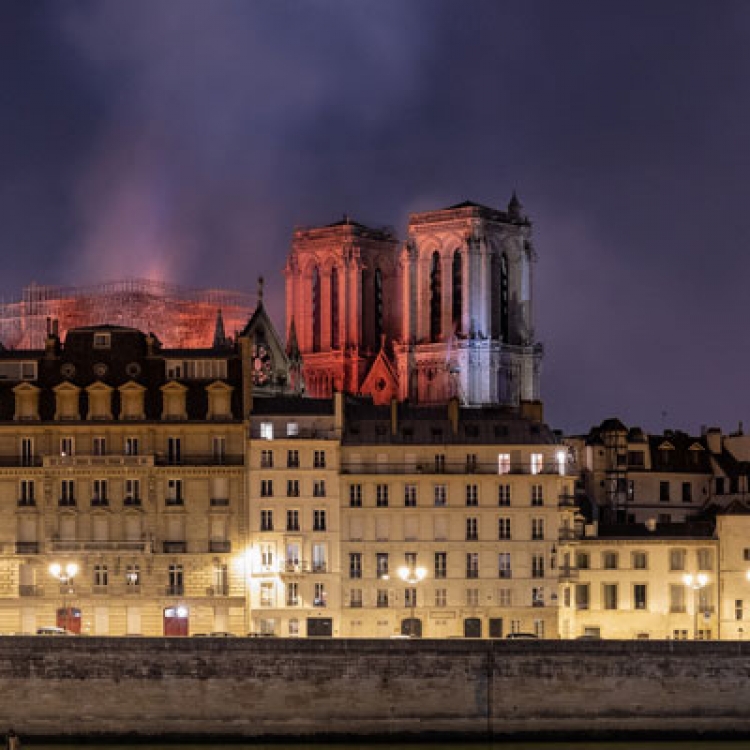Fire prevention in historic buildings and heritage sites

The Notre Dame fire is a tragic reminder that historic buildings require specialist fire prevention measures. Prof. James Lygate of IFIC Forensics explores some of the lessons learned.
The fire at Notre Dame Cathedral in April highlights the vulnerability of historic buildings and heritage sites. Glasgow has seen two fires at its world-renowned school of art and numerous cities around the world have suffered heritage fires such as the Bank building in Belfast and the National Museum of Brazil.
Whilst the frequency of such fires is relatively low the consequence is high and there is an apparent correlation between the occurrence of heritage fires and renovation or repair. Simply put, the risk is highest when the state of the building is being altered.
Common causes of fire
In normal use, fires in these buildings arise as a result of the interaction of people with the buildings and so a good fire safety management system in a historic building will look to prevent fires occurring. One element of an effective plan is the monitoring of persons in the building by use of CCTV with proper guarding and supervision. It is important to recognise that different cultures have different rules and attitudes towards smoking. A policy of no smoking must be rigorously enforced amongst all persons present: employees, visitors and contractors.
Some fires are the result of electrical anomalies which can be reduced by regular examination and testing of the installations. The use of thermal imaging, also known as thermography, is recommended as it permits the identification of poor connections, resistive heating and overloaded circuits. To be effective thermal imaging needs to be undertaken when circuits are in use. The occurrence of electrical fires can also be reduced by installing systems where the current flowing in the current carrying conductors is monitored and fitted with appropriate protective devices.
Compartmentation and sprinklers
Lack of compartmentation and separation can contribute to rapid and uncontrolled fire spread. It is difficult to divide up historic buildings into compartments but interestingly Notre Dame's roof structure could have been compartmented.
The routing of services can compromise compartments and separating walls. It is essential that any openings are properly fire stopped to maintain integrity and separation. There is no excuse for ill-fitting fire doors and poorly maintained intumescent seals. Free swing closers can be used to avoid the need for wedges which stop self-closers working.

It is suggested that the fire in the roof of Notre Dame was first detected by the activation of a VESDA fire detection system about 20 to 30 minutes before the first call to firefighters. VESDA stands for 'very early smoke detection apparatus' and provides volumetric smoke detection.
Had a sprinkler system been fitted in the roof space above the vaulted ceilings of the cathedral, it is likely that it would have suppressed and controlled the fire until firefighters could reach and extinguish it. Whilst there is an understandable concern about the accidental activation of a sprinkler system and the water damage that results, we can repair water damaged paintings, but we cannot repair paintings which have been consumed in a fire.
Managing contractors
When works are being undertaken it is essential that there is a proper understanding between building owner, contractor and subcontractors as to who is in charge and who is responsible. The building owner needs to take the initiative in the liaison between owner and contractor and establish clear lines of accountability and communication. This is particularly important when there are a myriad of subcontractors working on a site at any one time. A useful and practical way of identifying different subcontractors or trades is to have them wear different coloured overalls or high viz vests.
The crux of understanding the threat is to assess and mitigate the risks. Hot work permits should clearly state how and for how long a fire watch is to be. An emergency plan will state how the alarm is to be raised, persons are to escape, a fire is to be fought and contents removed. The apparent inactivity at Notre Dame while the roof burned hid the successful effort to save most of their irreplaceable artwork.

Prof James Lygate is visiting professor of fire investigation at the University of Edinburgh and principal investigator at IFIC Forensics.
